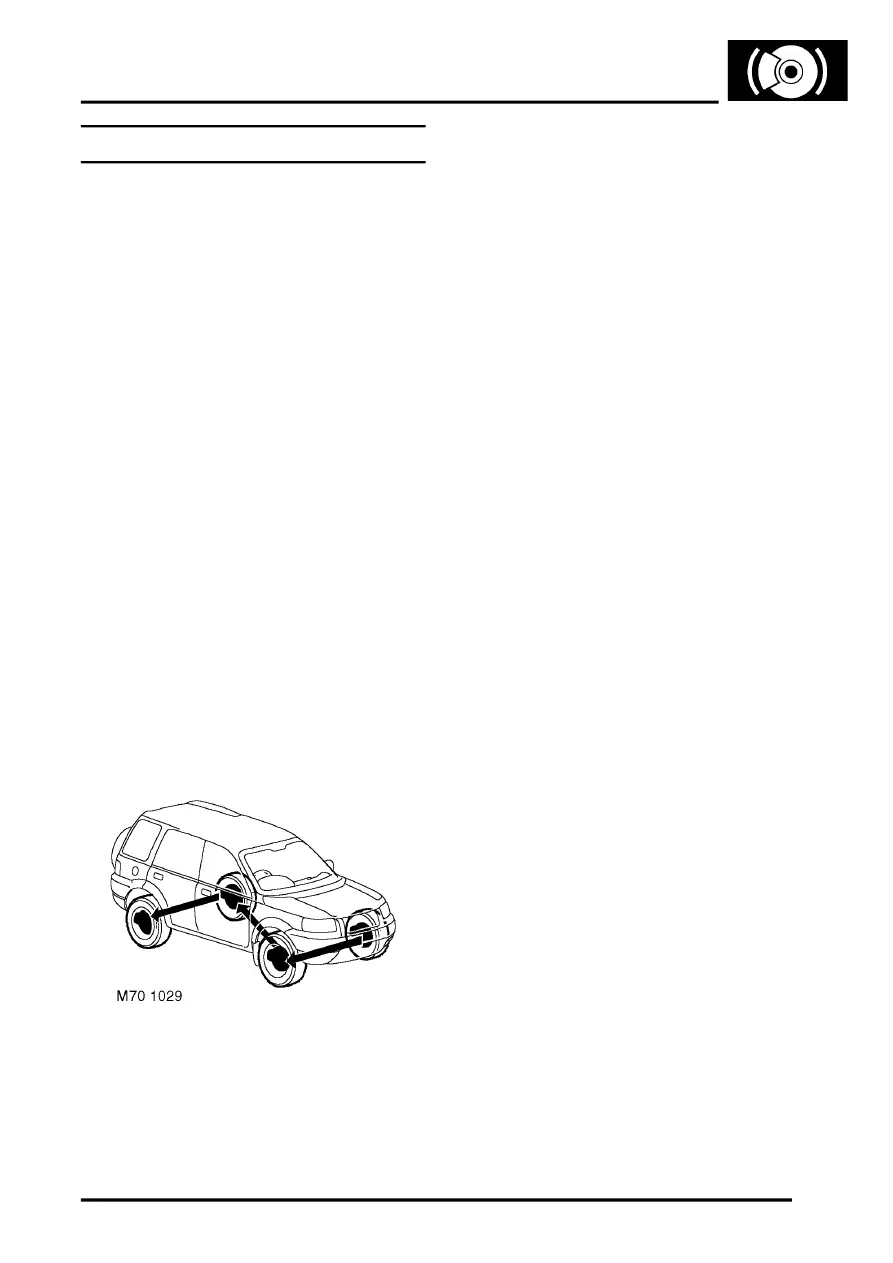Freelander Service Procedures

BRAKES
ADJUSTMENTS
70-1
BRAKES
ADJUSTMENTS
Brake bleed
$% 70.25.02
Check
1. The following procedure covers bleeding the
complete system but where only the primary or
secondary circuit have been disturbed in
isolation, it should only be necessary to bleed
that system. Partial bleeding of the hydraulic
system is only permissible if a brake pipe or
hose has been disconnected with only minor
loss of fluid.
CAUTION: Ensure the fluid in the reservoir
is maintained between the minimum and
maximum levels throughout the bleed
procedure using new brake fluid.
Adjust
1. Raise front and rear of vehicle.
WARNING: Do not work on or under a
vehicle supported only by a jack. Always
support the vehicle on safety stands.
2. Check all pipe and hose connections are tight
and there are no signs of leakage.
3. Top-up fluid level in brake reservoir to 'MAX'
CAUTION: Never re-use fluid that has been
bled from the system.
4. Bleed sequence: LH front to RH front, LH rear
to RH rear.
CAUTION: Use only new brake fluid of the
recommended grade.
5. Attach bleed tube to front brake caliper bleed
screw on passenger side, submerge free end in
a clear container containing brake fluid.
CAUTION: Brake fluid will damage paint
finished surfaces. If spilled, immediately
remove fluid and clean area with water.
6. Apply pressure to brake pedal several times,
then apply steady pressure.
7. Loosen bleed screw to release brake fluid and
air. Allow pedal to return unassisted.
8. Depress brake pedal steadily through its full
stroke and allow to return unassisted. Repeat
procedure until a flow of clean air-free fluid is
purged into container then, whilst holding pedal
at end of downward stroke tighten bleed screw
to 10 Nm (7.5 lbf.ft) on calipers and 8 Nm (6
lbf.ft) on wheel cylinders.
CAUTION: Ensure the fluid in the reservoir
is maintained between the minimum and
maximum levels throughout the bleed
procedure using new brake fluid.
9. Top up brake system reservoir.
10. Repeat procedure at each wheel in the
sequence shown.
WARNING: Braking efficiency may be
seriously impaired if the incorrect bleed
sequence is used.
11. Remove tube from bleed screw and fit bleed
screw dust cap.
12. Apply brakes and check for leakage.
13. Remove stands and lower vehicle.
14. Road test vehicle. Check brake pedal for short
firm travel when brakes are applied.
